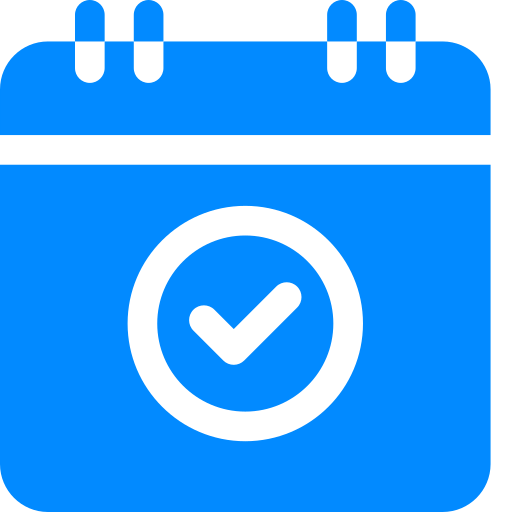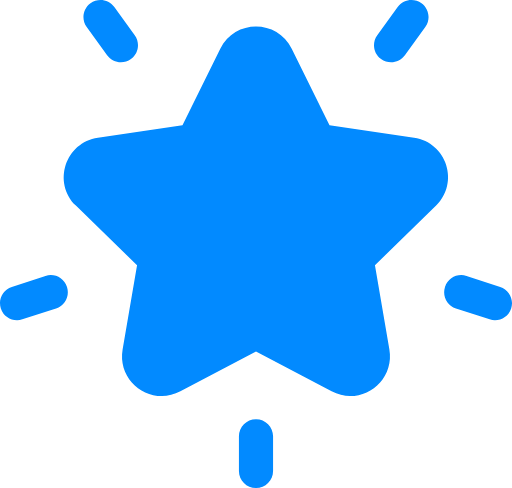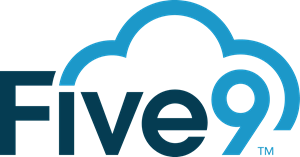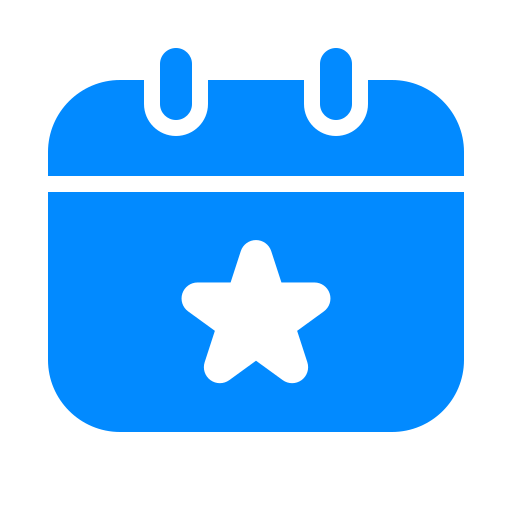9 Ways To improve SDR productivity

Sales Development Representatives (SDRs) are the unsung heroes of the sales world. They're the initial spark that ignites fruitful customer relationships. Like skilled prospectors, they sift through leads to find potential gold.
Unlike salespeople who focus on closing deals, SDRs qualify leads, nurture prospects, and ultimately set the stage for success.
But with overflowing inboxes and packed schedules, how can SDRs maximize their productivity and keep the sales pipeline flowing? In this article, we'll explore nine powerful strategies to boost SDR efficiency and propel your sales game to new heights.
Ready to transform your sales process with improved SDR productivity? Keep reading.
Importance of Improving SDR Productivity
Optimizing SDR productivity is a catalyst that fuels your entire sales engine. Here's why elevating SDR efficiency is crucial for your bottom line:
Boosting Sales Success
Streamlined SDR processes lead to more qualified prospects by ensuring targeted and relevant interactions. This laser focus allows SDRs to present the right value proposition to the right people at the right time.
By nurturing leads with targeted content and addressing specific pain points, SDRs prime prospects for a smooth handoff to the sales team and improve speed to lead, ultimately increasing win rates and building a thriving sales pipeline.
Prospecting with Precision
Enhanced productivity means SDRs can refine their prospecting techniques, focusing their efforts on leads with the most promise. This targeted approach ensures that valuable resources are invested where they're likely to yield the best returns.
Supercharging Efficiency
SDRs gain valuable time by minimizing manual tasks and optimizing workflows, allowing them to focus on building meaningful relationships with prospects.
Mastering Time Management
Effective SDRs prioritize tasks, leverage tools, and hone their focus. This translates into more outreach, warmer leads, and, ultimately, increased deal closures.
Enhanced Engagement
With efficient systems in place, SDRs have more capacity for personalized interactions. This leads to stronger connections with prospects and a more positive overall customer experience.
Strategies and Tactics for Improving SDR Productivity
Now that you understand the critical importance of SDR productivity let's dive into actionable strategies and tactics. These proven methods will help your SDR team reach new heights of efficiency and become lead generation powerhouses.
1) Track Your Prospect-to-Meeting Ratio for Focused Insights
The prospect-to-meeting ratio is a crucial metric that reveals how efficiently your SDRs turn leads into qualified meetings.
Imagine SDR Sarah sends out 100 personalized outreach emails to qualified contacts within your target industry. If 10 of those emails convert into meetings with decision-makers who are genuinely interested in your product or service, then Sarah's prospect-to-meeting ratio for that campaign is 10%.
This valuable ratio tells you two things. First, it indicates how well Sarah's outreach message resonates with your ideal customer profile. Second, it provides insight into the effectiveness of your targeting strategy. Are you reaching the right people with the right message?
What You Should Do
- Prioritize Qualified Accounts: Focus efforts on accounts with the highest potential for conversion. This strategy enhances the quality of meetings and improves the prospect-to-meeting ratio.
- Track Consistently: Ensure your SDRs log every prospect interaction and meeting scheduled. This data is your goldmine.
- Analyze by Campaign: Break down the ratio by outreach type (email, phone, social, etc.) to see what's most effective.
- Set Attainable Goals: Don't demoralize your team with unrealistic ratio expectations. Use historical data and industry benchmarks to set achievable aims that motivate progress.
- Iterate and Improve: Regularly assess your ratio data to identify areas for refinement in your outreach and targeting strategies.
2) Leverage Sales Intel to Supercharge Your Outreach
Think of sales intelligence as your SDR's secret weapon. It's the inside scoop that transforms cold calls into warm conversations. Imagine knowing your prospect's recent industry news, their technology stack, or even their latest social media updates. Sales intelligence gives your team a powerful edge in a competitive sales landscape.
What You Should Do
- Invest in Sales Intel Tools: Equip your team with platforms that gather company insights, contact information, purchasing signals, and competitor intelligence. ZoomInfo and Apollo.io are just a few examples of these tools.
- Integrate with Your CRM: Ensure seamless access to this intel within the tools your SDR team lives in daily—your CRM is a natural fit.
- Prioritize Relevant Insights: Tailor the information you provide to align with your ideal customer profile and SDR outreach strategies. Don't overwhelm them with data overload.
- Create Talking Points: Help SDRs translate intel into personalized openers, questions, and value propositions for their conversations.
- Encourage Social Awareness: Show SDRs how to leverage social media platforms for intel gathering, building rapport, and finding the right decision-makers.
Having detailed insights about target accounts, including information on companies and key decision-makers, arms SDRs with the necessary knowledge to generate demand, spark interest, and advance deals through the sales funnel.
3) Establish a Consistent and Scalable Sales Development Process

A well-defined sales development process is the foundation of your SDR team's success. Make it:
- Repeatable: A consistent process allows you to measure results accurately, identify areas for improvement, and replicate success across your SDR team.
- Scalable: As your team and target market grows, a flexible process ensures you can adapt without sacrificing quality, boosting SDR productivity even as volume increases.
Think of it as their roadmap to efficiency and growth.
What You Should Do
- Map Your Ideal Customer Journey: Begin by understanding every step a prospect takes, from initial awareness to a closed deal. Where do SDRs fit in this journey?
- Define SDR Touchpoints: Outline the specific actions SDRs will take at each stage, such as qualification calls, personalized emails, or social outreach.
- Develop a Sales Development Playbook: This should include best practices, scripts, email templates, and workflows that guide SDRs through their day-to-day activities, making both operations and onboarding smoother.
- Continuously Optimize: Regularly review and update the playbook based on feedback and new insights, ensuring the process remains effective and relevant.
- Implement Regular Training: Ensure SDRs are well-versed in the playbook and understand how to apply it effectively, reinforcing the importance of consistency and efficiency.
4) Streamline Your Workflow with Task Automation
Imagine your SDR, Emily, spends hours each week manually updating CRM records, scheduling follow-ups, or researching prospect information online. That's valuable time lost that could be spent connecting with leads.
Task automation is like giving Emily a tireless virtual assistant, freeing her up to focus on what she does best: building relationships.
What You Should Do
- Identify Your 'Time-Sinks': Start by pinpointing the tasks that consume a significant portion of your SDRs' time without directly contributing to sales, such as data entry, email follow-ups, and lead qualification.
- Explore Automation Tools: Research solutions specifically geared towards sales development, addressing scheduling, data entry, lead qualification, and even personalized email outreach at scale.
- Set 'If/Then' Triggers: Create workflows within your automation tools. For example, schedule an automated follow-up task if a prospect opens an email.
- Integrate Across Platforms: Ensure seamless communication between your CRM, email platforms, and any specialized automation tools you adopt.
You give your SDR team the gift of time by automating tedious tasks. This translates into more meaningful interactions, a supercharged pipeline, and increased revenue potential.
5) Optimize Scheduling with Dedicated Software

The dreaded scheduling back-and-forth can be a major time drain for SDRs, stalling momentum and frustrating prospects. That's where dedicated scheduling software steps in as a game-changer. Think of it like a virtual gatekeeper, streamlining the process of finding mutually agreeable meeting times.
Advanced tools like Meera.ai bring this optimization to another level with their AI-powered scheduling capability that understands time preferences and can learn from past behavior to find the perfect slots.
Here's how scheduling software benefits your SDR team:
- Effortless Appointment Booking: Prospects see open slots on your SDR's calendar and choose what works for them.
- AI-Powered Time Optimization: Get suggested meeting times based on historical data and individual preferences for maximum efficiency.
- Built-In Buffer Management: An AI scheduler lets you use buffer time between meetings to ensure your SDRs stay focused and prepared throughout the day.
- Seamless CRM Integration: Avoid double bookings and ensure your CRM stays up-to-date with all scheduled appointments.
When choosing a scheduling software, look for easy-to-use interfaces, customizable links for your SDRs, robust CRM integration, and reporting features to track scheduling efficiency.
Most importantly, train your team on using the software to its full potential, emphasizing the importance of setting realistic availability to avoid overbooking and strategically placing buffer times between meetings for preparation and follow-up.
6) Harness AI for Targeted Lead Discovery
AI empowers SDRs to become expert prospectors by analyzing vast amounts of data to identify high-potential leads that mirror your ideal customer profile. This includes industry, technology, company size, and even online buying signals.
A retail company saw a 40% surge in qualified leads, thanks to AI-powered engagement, even outside regular business hours.
What You Should Do
- Define Your Ideal Customer Profile (ICP): AI for SDRs works best with a crystal-clear understanding of your most successful clients and what defines them.
- Create a Target Account List: Use AI-driven insights to compile a dynamic and prioritized list of target accounts for each segment, ensuring SDRs have a clear set of companies to research and connect with.
- Invest Wisely in AI Tools: Research platforms specializing in lead discovery and predictive analytics, ensuring they align with your ICP and tech stack.
- Incorporate AI into Your Sales Strategy: Make AI an integral part of your sales development strategy, using it to refine targeting, personalize outreach, and streamline the lead qualification process.
- Balance AI with Human Touch: AI will find leads, but ultimately, your SDRs forge the connections. Empower them to personalize their outreach using the intelligence AI provides.
7) Enhance Lead Connections with Specialized Communication Tools
Your SDR team needs tools to connect with prospects quickly, efficiently, and on the prospect's preferred channels. Think beyond just email and phone. Consider how your SDRs can add another dimension to their communication with leads.
What You Should Do
- Embrace Multi-channel Communication: Equip SDRs with tools for phone, email, social media outreach, and even video messaging to personalize interactions.
- Invest in Call Analysis: Leverage AI-powered call review platforms to identify successful patterns and areas to improve and gain deeper insight into prospect needs and motivations.
- Explore Asynchronous Options: Tools for screen-recorded videos or personalized voicemails can be powerful when a live call isn't possible.
- Don’t Neglect Email Efficiency: Help SDRs craft effective email templates with powerful subject lines and personalized content to increase open and response rates.
- Leverage the Power of Scheduling: Give prospects a frictionless way to book meetings on your SDRs' calendars easily.
8) Accelerate Deal Closure with Targeted Automation

The transition of a customer from an SDR to an account director and eventually to the customer success team is a delicate process fraught with potential delays and miscommunications. Automating tasks associated with these handoffs can ensure a smooth transition, minimize friction, and maintain momentum toward finalizing deals.
Automation can also facilitate the seamless sharing of crucial sales details with customer service representatives, ensuring that new customers receive the attention and care they deserve right from the start.
What You Should Do
- Map Out Key Handoff Points: Identify critical stages in the customer journey where automation can enhance the handoff process, from initial sales engagement to customer success.
- Set Automation Triggers: Identify opportunities for automation, such as sending personalized welcome emails, onboarding resources, or scheduling introductory calls for new clients.
- Ensure Smooth Information Transfer: Utilize automation to ensure that all relevant customer information and sales details are accurately and promptly passed along to the customer success team.
- Monitor Customer Onboarding: Automate tracking new customer onboarding processes, ensuring any issues are quickly identified and addressed to prevent delays in deal closure.
9) Foster SDR and Account Executive Synergy
A strong relationship between SDRs and Account Executives (AEs) is the bedrock of a successful sales organization. When these two teams are in sync, qualified leads flow seamlessly through the pipeline, and valuable insights are shared across both roles.
What You Should Do
- Encourage Open Communication: Facilitate regular check-ins, joint workshops, and shared channels for feedback between SDRs and AEs.
- Define Clear Roles and Responsibilities: Avoid confusion and overlap by outlining the specific tasks and expectations for SDRs and AEs in the qualification and hand-off process.
- Celebrate Collaboration: Recognize and reward successes born from SDR and AE cooperation, fostering teamwork and a sense of shared goals.
Wrapping Up
SDRs are the lifeblood of your sales process, igniting the initial spark that fuels growth. Optimizing their productivity is no longer optional. AI-powered tools, intelligent text messaging, strategic processes, and a culture of collaboration pave the way for a new era of SDR success.
A thriving SDR team translates into a booming business. By embracing our outlined strategies, you'll empower your team to generate more qualified leads, build stronger relationships, and ultimately close more deals.
A programmer by trade, Nick Saraev is a freelance writer and entrepreneur with a penchant for helping people achieve their business goals. He's been featured on Popular Mechanics & and Apple News and has founded several successful companies in e-commerce, marketing, and artificial intelligence. When he's not working on his latest project, you can find him hiking or painting.


.png?width=512&height=512&name=guru%20(1).png)

.png?width=199&height=109&name=salesforce-logo1-removebg-preview%20(1).png)


.webp?width=716&height=569&name=banner-img%20(1).webp)


.png?width=352&name=asdfhjsd%20(1).png)
